Mayoral Roll Call
By Mark Loehrke
December 2018 View more Featured
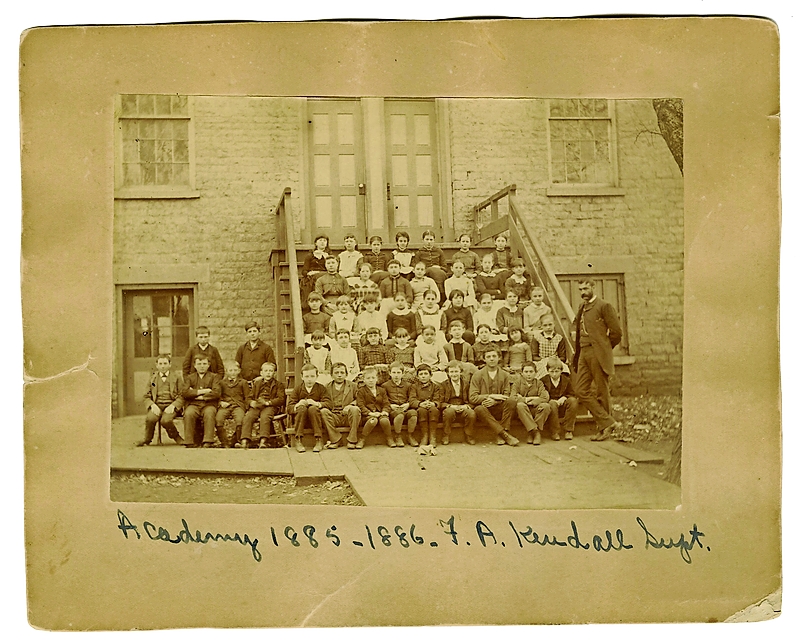
Several Kendalls have had leadership roles in Naperville.
How well do you know the past mayors of Naperville? With another election looming in 2019, it’s a good time to brush up on some of the names and faces that have occupied the office over the past 100-plus years.
1913–1917
Francis Kendall
Kendall was the first mayor elected after the Commissioner form of government (Mayor, Commissioner, Clerk) was adopted. While it would have been a fitting honor for a dedicated proponent of education—who spent much of his life as a teacher, professor and superintendent in Naperville—the Kendall Elementary School in District 204 that bears his family name (and abuts Pradel Drive, incidentally) is actually a tribute to one of the former mayor’s six children: World War I hero Oliver Julian (“Judd”) Kendall.
1917–1921
Charles Bowman
Appointed after Kendall’s death
1921–1923
Alexander Grush
Appointed after Bowman’s resignation
From the meat business to the oil trade to a career in civic affairs, the multifaceted Mr. Grush spent a total of six years in the mayor’s chair. After taking over the final two years of the term vacated by Charles Bowman, Grush won a full four-year term of his own eight years later.
1923–1927
Benjamin Piper
His four-year stint as mayor was but one of the many ways in which Piper left his civic imprint on the City of Naperville. At various points throughout his 83 years, he also served as city attorney, sat on the board of education, and was one of the founding members of the Naperville Country Club.
1927–1931
Herbert Thompson
Like many of Naperville’s early leaders, Thompson brought to his mayoral post a decidedly eclectic professional résumé—in his case, banking and auto repair. His auto dealership, Naperville Garage, sold Overlands, Willys-Knights, and Whippets. Also like several other early mayors in the city’s history, Thompson was deeply involved in freemasonry, serving as high priest of Euclid Chapter No. 13, Royal Arch Masons, 12 years after leaving office.
1931–1935
Alexander Grush
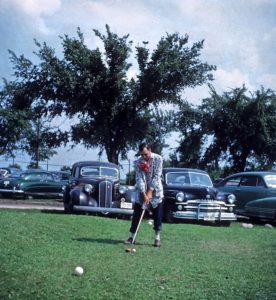
James Nichols Jr.
1935–1951
James Nichols Jr.
After his father’s name graced the old Nichols Library (and thus became synonymous with a simmering public-private property rights battle) and years before George Pradel came along, James Jr. was the longtime mayor who held the unofficial title of “Mr. Naperville,” the result of living a life so closely entwined with the city and its people. Nichols was also one the founding members of Naperville Country Club (above), which acquired 130 acres of land in 1920.
From James Nichols Jr.’s obituary in the Naperville Clarion on February 24, 1955:
“In the audience there were people from every phase of his life. Following the ceremony little groups congregated outside the church, even in the mist of an inclement afternoon, and in hushed tones told of some thoughtful deed performed by the late Mr. Nichols.”
1951–1959
Charles Wellner
1959–1967
William Zaininger
Almost every mayor has seen some degree of physical growth in the city during his or her term, but few can equal the expansion that unfolded during Zaininger’s time in office—specifically in 1960, when Naperville doubled in size virtually overnight thanks to the largest single annexation in the history of DuPage County.
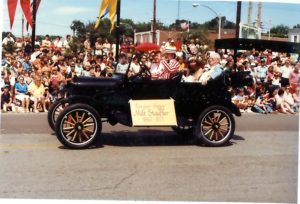
Stauffer in Naperville’s 1981 Sesquicentennial Parade
1967–1969
Milton Stauffer
The City Manager form of government (Mayor, Councilman, City Manager, Clerk) was adopted after Stauffer’s first term.
1969–1971
Milton Stauffer
While his four decades with one of the city’s most iconic companies (Kroehler Manufacturing Co.) and service on countless local boards (North Central College, Naperville National Bank, Naperville Community Unit School District 203, and the Naperville Park District, among them) easily secure Stauffer’s place in city lore, countless Naperville kids also have him to thank for the key role he played on the committee that helped create Centennial Beach.
From Milton Stauffer’s obituary in the Chicago Tribune on September 3, 1992:
“Naperville grew so fast during his years in office that he told the Tribune in 1968 that ‘the requests for annexation and new development are coming in almost faster than we can digest them.’ ”
1971–1975
G. Kenneth Small
Much like several of his immediate predecessors, Small presided over Naperville in an era that was characterized by massive growth. Unlike any other previous mayors, however, he was not raised here. Small came to the city during one of the major events that helped fuel the growth that he would eventually oversee: the arrival of Bell Labs (c. 1970), where he was a public relations manager. Thank Small for the city’s original stormwater management program.
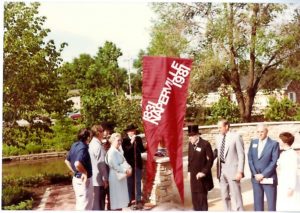 1975–1983
1975–1983
Chester Rybicki
It’s easy to take Naperville’s vibrant downtown for granted these days, but its survival was very much in peril at several points during Rybicki’s two terms in the mayor’s office—the golden age of downtown-killing shopping malls—which is why he went to work with a cross-section of public and private constituencies to help establish the city’s signature Riverwalk.
From Chet Rybicki’s obituary in the Daily Herald on March 10, 2013:
“Chet’s crowning joy was to be part of Naperville’s growth and development—especially during the 1970s and 1980s—helping to build a great place for families to raise children.”
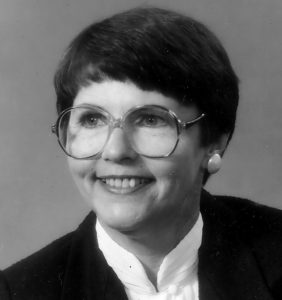
Margaret Price
1983–1991
Margaret Price
Price continued a streak of non-native Napervillians in the office, but added one distinction all her own as the city’s first (and, thus far, only) female mayor. Her two terms in the top spot were, however, but one notable stop on a three-decade journey in public service that included time as a City Council member, a city plan commissioner, and holding various civic board positions.
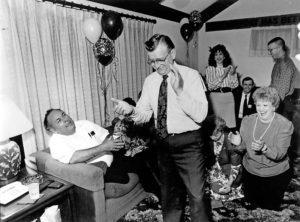
Sam Macrane applauds the results of the Naperville mayoral election in 1991.
1991–1995
Sam Macrane
Despite a term during which he was beset by a variety of health issues (he was sworn in from his bed at Central DuPage Hospital following a heart attack shortly after the election), the Philadelphia native and former businessman nevertheless was as quietly active and engaged as anyone to have held the post before him, overseeing yet another period of explosive growth as the city’s population ballooned from 88,000 to more than 139,000. He also fulfilled two council terms in 1997 and 2001.
From Sam Macrane’s obituary in the Chicago Tribune on March 31, 2005:
“Although Macrane served only one term as mayor, his tenure is particularly remembered by members and supporters of the 1992 Naperville North High School football team, which won the class 6A state title that year.
The team returned to the high school gymnasium after midnight and Macrane was waiting for it. He held up a street sign declaring the team’s feat and the crowd roared, said Councilman Richard Furstenau, whose son Ryan played quarterback on the team.
‘That just goes to show you the kind of public servant Sam was. He wanted to be where ever it was he needed to be,’ Furstenau said.”
1995–2015
George Pradel
(see “The Face of the City” below)

Mayor Steve Chirico
2015–present
Steve Chirico
Taking over the mantle of city leadership following George Pradel’s retirement after a whopping 20 years in office wasn’t going to be an easy task for any candidate, but as a longtime resident, local business owner, and active community leader—and with a term on the City Council under his belt—Chirico was up to the task, and has made the transition a relatively smooth one.
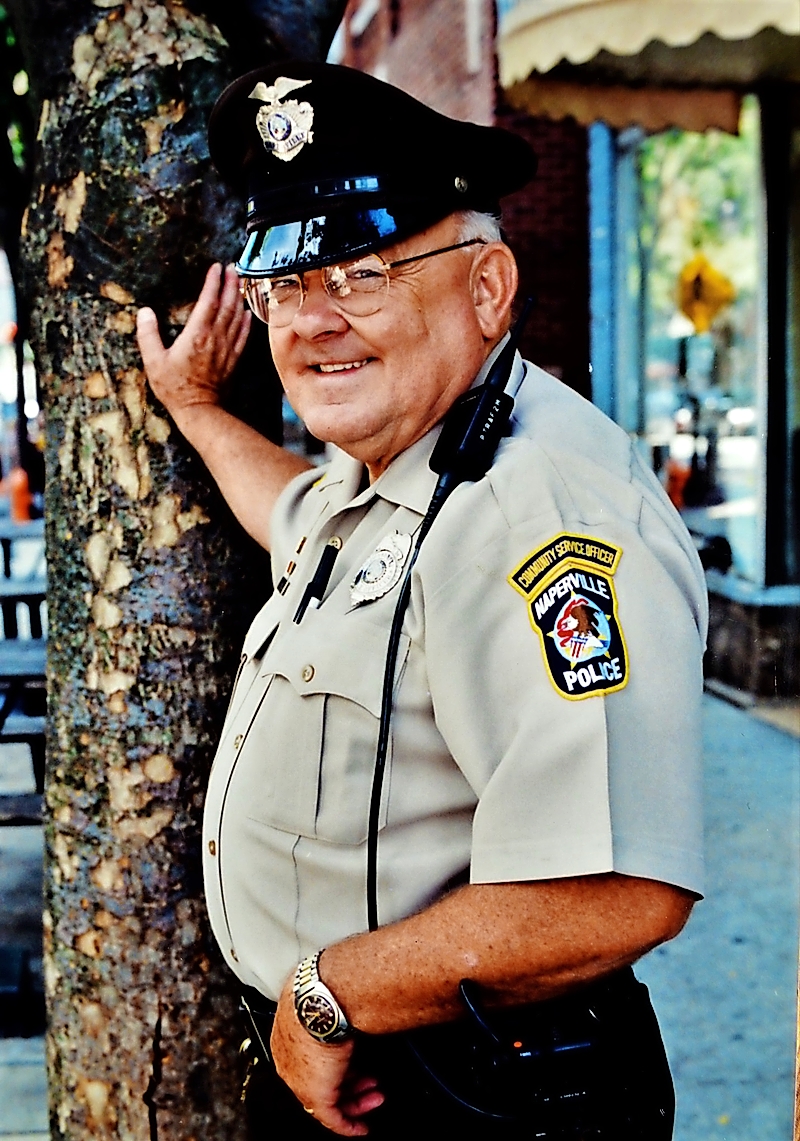 The Face of the City
The Face of the City
It seems almost academic to note that, with his five-term reign that ended in 2015, George Pradel was the longest-tenured mayor in the history of Naperville. After all, for many of the city’s more recent transplants—specifically those who arrived within the past 20 years—Pradel’s place in the community had little to do with numbers. He wasn’t just the mayor, but the smiling face of the city they came to call home.
Far from the negative connotations that weigh down the derisive term “career politician” in today’s bare-knuckles civic debates, Pradel’s years of service were just that—service to a city for which he never hesitated to profess his love. Continued service, in fact, because Pradel wasn’t some power-hungry opportunist who relished the political perks of the job, but rather a former police officer who was simply looking for any chance he could find to continue singing the praises of the community that he had spent nearly 30 years protecting and getting to know better as “Officer Friendly.”
The top job, of course, demanded the kind of tough decisions and heated debates that characterize civic life in a large (and ever-growing) suburban metropolis, and Pradel handled more than few hot potatoes during his two decades in office. But sitting behind a desk or presiding over a council meeting was never the part of the job he relished, nor was that the mayor that Naperville residents came to know and love. They knew the guy behind the wheel of the snowplow during an all-hands-on-deck winter storm, or the guy wielding the giant scissors at yet another ceremonial ribbon cutting for a new park or business, or the guy in the tuxedo and top hat waving from a parade float and tossing out candy, or the guy shaking hands and chatting with the kids—at their level—during a summertime session at the innovative Safety Town complex that he championed, and which now bears his name and that of his late wife Pat.
That was the Mayor Pradel whose death this past year inspired heavy news coverage throughout the area, several days of huge crowds for his public memorial at the municipal center, and countless tributes from people of all walks of life who had been touched by the enthusiasm, the decency, and the simplicity with which he worked for the city and its residents. While Naperville has evolved well beyond its small-town beginnings, Pradel was long a reminder that behind all of the growth, the city remained what it has always been—a strong and vibrant community.
Pradel Exhibit
Naper Settlement will soon host a pop-up exhibit featuring Mayor Pradel at the Municipal Center, honoring the mayor’s lasting impact on Naperville. The exhibit will document his life of service, including his time as Officer Friendly with the police department, as well as his tenure as mayor, featuring artifacts such as memorabilia, photos, and stories from citizens. Visitors will be able share their stories of Mayor Pradel by submitting them in a special mailbox, and the stories will become part of the museum’s permanent collection. For more information, visit napersettlement.com.


